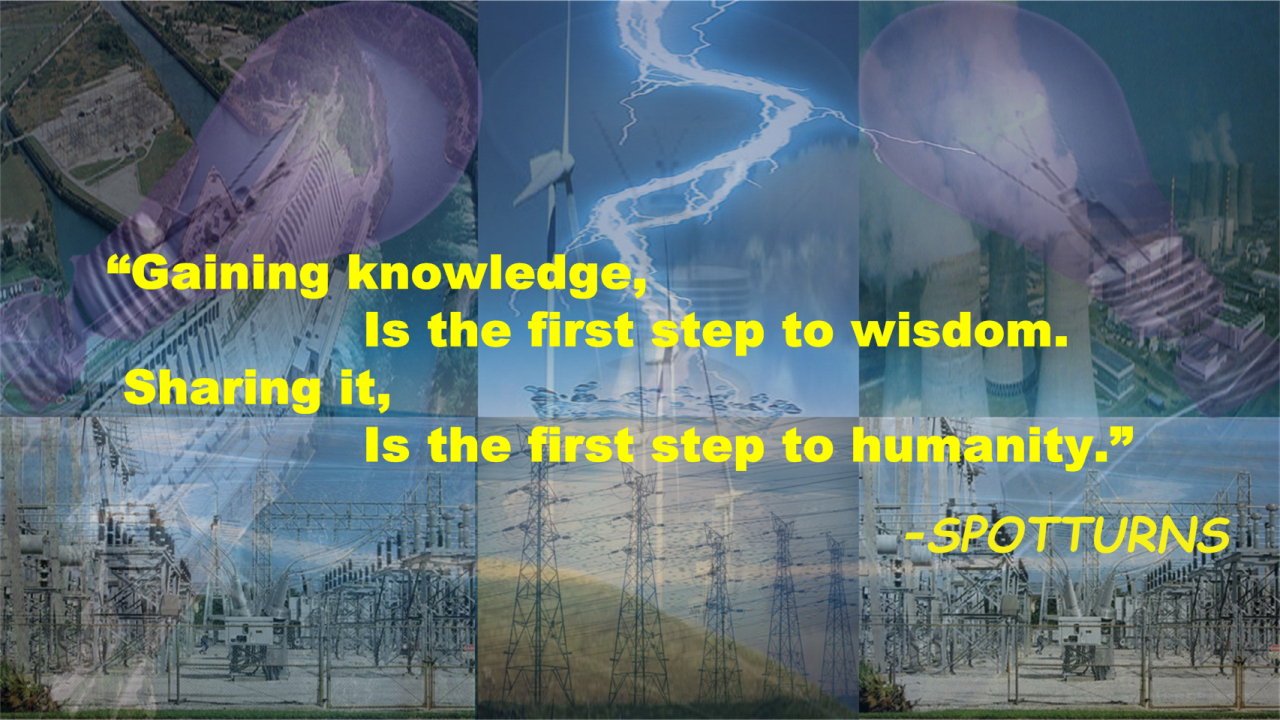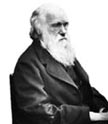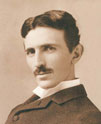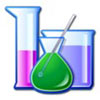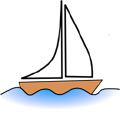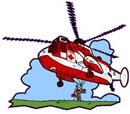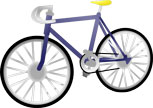

| What makes certain materials "glow" under a black light? This experiment will tell you why. |


Have you ever wondered what makes certain things glow under black lights?
For this experiment you will need:
• a black light
• petroleum jelly
• a piece of paper
First we’ll use the petroleum jelly as a kind of invisible ink. Dip your finger into the jelly, then use your finger to write a message on the piece of paper. Use more jelly if you need to – but this probably isn’t the time to write a long speech! When you’re finished, wipe any remaining jelly off your finger. Have the black light ready, then turn off the room lights and turn on the black light.
Can you see the message? Why is something that you couldn’t see in room light now visible when you can’t see any light?
First, let’s talk about the light. The reason black lights are called "black lights" is because they give off very little light that our eyes can see. Visible light contains a spectrum of colors ranging from red, through orange, yellow, green, and blue, to violet or purple. Beyond violet light in the spectrum is ultraviolet light, which our eyes cannot detect.
You may have heard of ultraviolet light if you know about sunburn. Sunburn is caused by a type of ultraviolet light, which scientists call “ultraviolet B” (UV-B). UV-B is higher in energy than the light from black lights, which is called “ultraviolet A” (UV-A). Black lights will not give you a sunburn.
If we can't see ultraviolet light, why does the petroleum jelly glow under the black light?
Most of the time when we look at an object, we see light reflected from the surface of the object. But with a black light, there isn't much visible light, so simple reflection of light doesn't account for how bright the jelly glows. Petroleum jelly contains substances called phosphors. A phosphor absorbs radiation and emits it as visible light. So the phosphors in the jelly are absorbing the invisible ultraviolet radiation from the black light and emitting visible light.
Can you find anything else in your home that glows under black light?
One thing that usually glows brightly under black lights is a white shirt. Most laundry detergents contain “bluing agents” that are advertised as making the whites “whiter.” In fact, these agents are phosphors that respond to the UV-A radiation in normal light. The black light emphasizes their presence.
Another example of phosphors can be found on new $20 bills. As part of the government’s program to make currency harder to counterfeit, $20 bills issued since October, 2003, have a “security thread” that glows under ultraviolet light. The security thread is being introduced into $50 and $100 bills as well.
Glowing Hands
Can you think of a way to make your hands glow in the dark?
For this experiment you will need:
• a black light
• petroleum jelly
• latex gloves if you don't want to get your hands messy (caution: some people are allergic to latex gloves!)
• someone to turn on the black light for you.
If you have Latex gloves, put them on your hands. Reach into the jar of petroleum jelly and scoop out enough jelly to cover both hands. Rub the jelly well over both hands, and then ask someone to turn off the lights in the room, and to turn on the black light. Hold your hand under the black light.
What do you see? Can you think of a way you could use this trick when telling ghost stories at night?


| What is the easiest way to pop a balloon? With a needle of course. Is there a way to put a needle into a balloon without popping it? |


Have you ever seen someone pop a balloon with a needle? Is it possible to stick a needle through a balloon without popping it?
You will need the following materials:
• balloons
• long wooden or metal skewers
• petroleum jelly
• a sharp pin
• cellophane tape
Blow up a balloon – not too full – and tie the opening shut. Dip the tip of a skewer in Vaseline and spread the Vaseline along the entire length of the skewer. If you are careful, you should be able to push the skewer all the way through the balloon without popping it. Insert the skewer with a gentle twisting motion into the end of the balloon opposite the knot. Continue pushing and twisting the skewer until the tip emerges from the other end, near the knot. Why doesn't the balloon pop?
Now try to stick the skewer into the side of the balloon.What happens?
The rubber in the balloon consists of many long molecules that are linked together. It's similar to the way all of the noodles in a plate of spaghetti stick together. These long molecules are called polymers; when molecules of a polymer are chemically attached to each other, it is called cross-linking. These links hold the polymer molecules together and allow them to stretch…up to a point. When the force or tension pulling on the cross-links is too great, they will break, and the polymer will pull apart.
Look at the rubber near the ends of the balloon where you first inserted the skewer. Does it look lighter or darker than the rubber in the rest of the balloon?
The rubber at the ends of the balloon is stretched out less than in the middle of the balloon. Therefore, there is less force pulling on it. This allows the tip of the skewer to break some polymer cross-links, push aside the molecules of rubber, and slide into the balloon. However, enough cross-links remain so that the balloon holds together.
In the side of the balloon, there are fewer polymer molecules. When you push the tip of the skewer through the rubber in the side of the balloon and the skewer breaks a few of the cross-links, the tension on the remaining cross-links is too great, and the balloon pops.
Do you think there is a way to stick a sharp pin through the side of a balloon without popping it?
Put a small piece of cellophane tape on the side of the balloon and press it down well. Now take the pin and press it through the tape and into the balloon. Does the balloon pop?
The tape sticks to the rubber in the balloon and will not allow the rubber to stretch to the breaking point when the pin pierces the balloon. In other words, the tape reinforces the cross links, and the balloon stays together


| Static electricity can be a problem whenever the humidity is low. In this experiment you will use static electricity to "bend" water. |


Static electricity can be a problem whenever the humidity is low. It causes shocks and makes dust stick to surfaces, and it can literally make your hair stand on end. In this experiment, you will see that it also can move things around.
For this experiment you will need:
- a nylon comb
- a water faucet
Adjust the faucet to produce a small stream of water. The stream should be about 1.5 millimeters (
1/
16 inch) in diameter.
Run the comb through your hair several times. Slowly bring the teeth of the comb near the stream of water, about 8 to 10 centimeters (3 or 4 inches) below the faucet. When the teeth of the comb are about an inch or less away from the stream, the stream will bend toward the comb.
Move the comb closer to the stream. How does the distance between the stream and the comb affect how much the stream bends?
Run the comb through your hair several more times. Does the comb bend the stream more now?
Change the size of the stream by adjusting the faucet. Does the size of the stream affect how much the stream bends?
If you have other combs, you can try these to see if some bend the stream more than others.
Static electricity is the accumulation of an electrical charge in an object. The electrical charge develops when two objects are rubbed against one another. When the objects are rubbed together, some electrons (charged components of atoms) jump from one object to the other. The object that loses the electrons becomes positively charged, while the object that they jump to becomes negatively charged. The nature of the objects has a large effect on how many electrons move. This determines how large an electrical charge accumulates in the objects. Hair and nylon are particularly good at acquiring charge when they are rubbed together.
A charged object attract small particles, such as dust. The charge in the object causes a complementary charge to develop in something close to it. The complementary charge is attracted to the charged object. If the complementary charge forms on something tiny, such as dust particles, these tiny particles move to the charged object. This is why your television screen becomes dusty faster than the television cabinet. When a television operates, electrons fly from the back to the screen. These electrons cause the screen to become charged. The charge on the screen attracts dust.
The comb attracts the stream of water in the same way. The charge on the comb attracts the molecules of water in the stream. Because the molecules in the stream can be moved easily, the stream bends toward the comb.
When you comb your hair with a nylon comb, both the comb and your hair become charged. The comb and your hair acquire opposite charges. Because the individual hairs acquire the same charge, they repel each other. Perhaps you noticed that after running the nylon comb through your hair, the hairs on your head stood on end. This is a result of your hairs repelling each other because they are charged.
Static electricity is more of a problem when humidity is low. When humidity is high, most surfaces are coated with a thin film of water. When objects coated by a film of water are rubbed together, the water prevents electrons from jumping between the objects.
For additional information, see CHEMICAL DEMONSTRATIONS: A Handbook for Teachers of Chemistry, Volume 3, by Bassam Z. Shakhashiri, The University of Wisconsin Press, 2537 Daniels Street, Madison, Wisconsin 53704.
|
text book link:
https://www.mediafire.com/?hdnsds3d5ldplps


